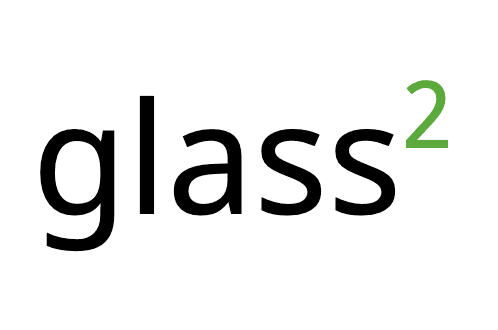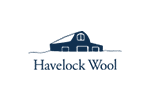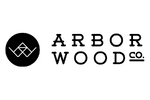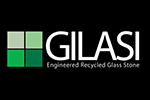This episode will discuss ways to incorporate biophilic design into your space. We are here today with Jessica McNaughton, Julia Antennucci, and Alyssa Holland of CaraGreen.
JESSICA: Hi, welcome to Build Green Live Green. This is our 24th episode. Today we have three of our resident experts here: Jessica, Alyssa, and Julia. And we are talking about Biophilic design, which was the topic of, actually it was our first two episodes, right? And we covered biophilic design and the principles of it and so on. But today we really wanted to kind of take it back to actual implementation of biophilic design in a space and how you incorporate some of those elements. We've done it at our office, but we want to talk about how you can do it in your own home. With that, we've got our biophilic partner here Beau, the Carolina dog, who's making lots of noise. Anyway, let's get started. So, biophilic design, Julia, why would you want biophilic design in your space? You want to kind of give an overview of what it is and how it impacts a space?
JULIA: Yeah, sure. So, Biophilic design is essentially bringing nature into the space. As human beings we spend quite a bit of time indoors, what's that statistic again?
ALYSSA: 80 percent, 90 percent.
JULIA: Wow, okay, even worse. We spend 90 percent of our time indoors. I like being outside, I like to go for runs, I like to hike. I like the sunlight. You know, if you're inside all day, we as human beings we really need that connection to nature to thrive to be happy, to be productive. Biophilic design brings natural elements into the space to help us be happy, productive, healthy.
JESSICA: Right. Our initial topics part 1 and part 2, our first two podcast episodes, really talked about how architects and designers could design it into a space using a lot of the principles. But biophilic design doesn't have to be an all or nothing approach. It can be done incrementally. So let's, kind of, dive right in and just talk about some ways that you can incorporate, you know, nature into a space and make yourself more comfortable and more productive.
ALYSSA: I mean, like you mentioned, we have Beau here with us. He's in our office a fair amount. Having that live animal, it just really connects you with nature. Like you see its physical nature in your space. I know a lot of people have pets at home. That's one way it kind of calms you down. I know I'm happy when I get home to see my cats. I know that they're there. It's just something to care for and tend to. So it's kind of a way to bring nature in, in a literal sense.
JESSICA: Yeah and I also think, you know, I’ve noticed that with Beau there, constantly people are coming in and saying, I'm going to walk Beau or throwing the ball to him and just interacting with him. So I think it actually promotes movement too. So it gets people outdoors. You know, people take him and take him for a walk and that gets you out into nature as well. So I think that's a good example.
JULIA: I am instantly calm when I see a dog and when I get to pet a dog and having that in our workplace, I feel like it changes the energy of the space in a way. You know, we have sometimes were stressed, sometimes we're busy and having you know a natural element of a literal live animal does help with that. When we're talking about live things, plants are an easy one. We have a few plants in the office and it's very helpful to me just to see something green. Makes me feel calm, makes me feel happy, makes me feel inspired.
JESSICA: Yeah so, I think those are two very direct biophilic design implementations, you know, actually having a live animal and live plants are obvious, you know, easy kind of first steps that you can do in your home or in your office. Let's talk about some more comfort related design principles.
ALYSSA: What comes to my mind is orientation of my desk. I like to be kind of in the back of the room facing the middle. It makes me feel more protected, that kind of savannah environment that you think of with biophilic design. So you have the option to see, you can be out in the open or you can be more secluded to kind of hunker down when you need to.
JESSICA: That reminds me of going into a restaurant, and my brother is like this, I'm like this, I always tend to go that inside corner. So I have that protected behind me and I can see in front of me. And that's a pretty well proven biophilic principle that people you know they like the comfort of being protected, but the idea of knowing what's in front of you. So I just got new furniture yesterday and when I set it up I thought of that very thing is, I already found my little corner of my living room where I'm in that kind of savannah environment and I can tuck in and I really found my spot, you know, just laying out the furniture was part of the design.
JULIA: That's so funny. My dad always needs to sit in the corner. He's like, “I'm Italian. Nobody can come up behind me and shoot me.” So I guess that's a biophilic natural instinct for him to have.
JESSICA: Yes, another thing when you talk about orientation, one of the things that I find the most interesting about biophilic design is the idea of risk and that people are drawn towards risky environments or risky situations. When you're talking about that in a home, for example, maybe it's, at my house I have this overlook at my stairwell where I can see down into the whole house. You know, it's a large drop and obviously I'm not going to fall off it, but you can have that whole vantage point you can see down. In an office environment it's often like a cantilevered walkway or something like that or a glass railing where you can see through and it’s kind of creates this almost element of danger and people are drawn to that as well.
ALYSSA: Are there ways to add elements of danger after your space is designed?
JESSICA: I think you could add a cactus.
ALYSSA: You get that living being that’s also spikey.
JESSICA: Yeah. Yeah. Or you know they mention often like pictures of sharks or tigers or animals, things that are seen as threatening but obviously they're in a picture or something. So they're not threatening. But yeah it does kind of create this kind of heightened sense of- because you associate that thing with danger. So there's ways to do it that aren't you know pictures and things like that, that you could add.
ALYSSA: Another thing I remember specifically from my room growing up and our house is we had a lot of fountains. Variety of fountains just with water trickling. Every night I would turn that on before I'd go to bed and just hear this soft like peaceful noise.
JESSICA: So you're a lot younger than I am. So when you say fountains you're not talking, I think of fountains like water spouting up you're talking about those like things that you buy at the store that have like rocks and…
ALYSSA: Trickle. The Zen garden type things.
JESSICA: Okay, not fountain, you made it sound like you grew up in a castle with Raina.
JULIA: My parents live on the sound on Long Island and every time I go home just hearing the sound of the waves crashing onto the beach, so calming. I really love hearing national water sounds in a space and I can imagine how that would be a really nice element of design.
JESSICA: It's funny and you can do that all the time, in fact last night when I was going to sleep, you can even ask Alexa to play ocean sounds. So you know I did that last night. But it's really nice and you can ask her to do it for a certain amount of time and stuff like that. I mean there's all sorts of sounds of nature that you can play in the background and they're calming and soothing and so on.
JULIA: Speaking of sounds, what about acoustics?
JESSICA: Acoustics is a great example, because, you know, you think about it a lot in an office or retail environment, well, you know, restaurants are a great example. With poor acoustics in a restaurant, it just ruins the whole experience. So for commercial applications incorporating products like EchoPanel, we see a lot of, by Kirei. They have so many different baffles and systems that you can use to introduce these beautiful soft surfaces and it really makes a difference just as far as aesthetics when it comes to acoustics. So EchoPanel’s a big one.
ALYSSA: A lot of the EchoPanel products even mimic natural systems, such as clouds or a tree canopy overhead. You can get custom cut outs, things that look like birds, the stars.
JESSICA: Yeah, you're right and the colors that they have as well can really add to a space. It's harder I think when you're talking about residential and you're talking about acoustics. So I think when you talk about acoustics in a residential application, you're kind of, kind of shoehorned into talking about rugs and furniture because those are, tend to be those bigger softer pieces. But there's always the opportunity to have like a feature wall or an accent wall that really incorporates maybe something like WonderWall which has wood at different depths and those different depths will really break up the sound. So you could really create an acoustic feature wall that really helps with, you know, some of the sound control within an open space.
JULIA: What about cork flooring?
JESSICA: Cork flooring is a great example, especially in between stories of a building, or stories of a house even. Expanko Cork, they've got a great line which has- it really helps with ICI which is impact insulation class, kind of like STC which is between wall noise, but impact insulation class is really what stops that “high heel noise” and a lot of people don't want carpet. Your next best thing is really going to be cork flooring. It is so good at absorbing sound and it has so many other great features. Not to mention being a sustainable product. So Expanko Cork, they have a half inch thick cork product which I absolutely love, and I think that's their Heritage collection. So cork floor is a great option for a home, residential for acoustics especially if you have loud kids scrambling back and forth between or a dog.
ALYSSA: So, moving off of sound, the next thing I generally think of is smell. I know I kind of grow some herbs at home like basil, mint, things like that and those smells just really kind of remind you of the outside. So even in your office space if people collaborate and just like have this little garden, you can kind of bring those nice peaceful smells, maybe cover up the smell of Sandy's hamburger.
JULIA: I saw a great Pinterest hack that I’ve been meaning to do, but people take eucalyptus and they tie it to the showerhead, so that when they turn on the shower the steam kind of mixes with the oils of the eucalyptus and creates a beautiful smell in your home.
JESSICA: That's nice. That's a great idea. I have an herb garden, it's outside. But I can see it right outside my window. So when I got back from my trip the other day I went outside, and I had these huge tomatoes that had already grown and cucumbers that had already grown. But it's really nice to see that and I can take the kids out there and show them that garden, they can see it out the window and they're always tomato spotting for me. That's a really neat way just to have something visual. So windows and daylight are a huge part of biophilic design as well. So if you're buying a home or choosing an office space, it's really important to consider how much light is getting into that space and how much control people have over the lighting, over the temperatures, over their own comfort. And that's true of a home as well. We're fortunate in our homes that we can turn the thermostat up and down and especially if you're the only adult living in the home, you get to decide which temperature the thermostat is set on. We have that control. In an office space, thermal comfort, acoustic comfort which we already covered, those may not be your decision. So, it's really important in an office environment to try to give people as much control over thermal comfort and comfort in general as you can. That's a big part of biophilic design. Maybe you've got one person having hot flashes while the woman sitting next to them has on knit gloves. So you know we experience that in our own office environment. So you know allowing for those things. I mean I think I brought in those gloves for Jolene, because I wanted to have her hands be warm when you know other people are having hot flashes.
ALYSSA: Or even having thermal variance. I know the front of our office tends to be a little bit warmer. It's by this glass door that just lets in a lot of light. It tends to be warmer than the back in the conference room. So you have the option to sit where you want and get that thermal comfort.
JESSICA: Yeah exactly and that's another thing that's popular in biophilic design is flexible seating. So you're not in the same spot every day. Everyone kind of has their home base where their desk is, but we do a lot of moving around in the office, not just for our own thermal comfort necessarily, but you want some privacy. You want to be secluded. You know you need to concentrate and things like that. So being able to offer that flexibility in an office space is good. And then in your home, I mean, ideally you have the same thing. If you're in a small apartment it's nice if you lay it out in such a way that if you want to go sit in your room and read quietly while Nathan's doing something else that you really leave yourself those options. So in an open space you could have like an EchoScreen or something that, you know, just gives that little bit of privacy. And just thinking about all those different requirements that people may have for how they want to feel. They may want some privacy. They may want some interaction and just designing in such a way to allow for those things and create those spaces.
JULIA: I want to go back to lighting for a second in residential spaces. Back to our apartment, Nathan and I, we have, you know, our apartment is beautiful, lighting is terrible. What do you do? In our office we have you know those amazing lights that we can control that mimic you know time of day. But in a home, how do you account for light when there's not as much natural light?
JESSICA: Well do you have a balcony?
JULIA: We do. It's very shaded, though.
JESSICA: Well I mean I think when you're in an environment like that where you actually don't control the amount of light, I think you can get light fixtures that mimic natural light, like we have in the office, the circadian lights, which adjust to your natural rhythm and you can adjust the type of light to the time of day. But I would you know I would suggest to try to get the bulbs that have the most natural light and try to get those into a space, and I think you guys get out a lot. Sometimes the upside of not having that much light is that you end up going outside to get more actual natural light. So I can see the benefit of that. In an apartment, well, I remember apartment living I would always love to keep the door open or open a window and just have that breeze, because that natural airflow, the actual outside air coming through is a very biophilic principle. It keeps people engaged and that's a lot of what biophilic design is about is keeping you engaged in what you're doing so that you're present. Right. And that really is what it comes down to as being present and being healthy. And if you have present healthy people at work, great. That's great for a business owner. If you have pleasant healthy people at home, that's great for you. The reason we talk about biophilic design this way is because it will make your life better. One thing we didn't cover yet that is a big part of biophilic design, and I think residentially it's kind of largely fallen by the wayside, but it's color. So we did an entire podcast on the impact of color. But let's talk about color in the home and, you know, what does color do when it comes to biophilic design?
ALYSSA: Well, so immediately you think of natural colors, greens, blues. We talked about in the color episode that things like blue are naturally calming, Green is naturally calming because it does remind us of nature. And Jessica, most of your house is blue. You have a lot of browns and that really just kind of ties us back to nature, natural roots. Reminds us of either the sky or of grass or trees, rocks things like that.
JESSICA: So it's interesting because a lot of design that we see today being in the countertops space, interior space, flooring, we see a lot of grays and whites. And it's really interesting because one of our more popular products is Durat, which is solid surface and its color, and it is bright reds and bright yellows and bright oranges, bright greens and it just gives you that pop of color that you're not typically seeing in a space.
ALYSSA: Even not expecting. So kind of like that risk. It's almost like a mystery. You're expecting the countertop to maybe be like a gray or a white like you mentioned, but then you walk into your kitchen, it's bright orange. It's going to make you happy to see that, keeping your mind sharp basically.
JESSICA: Right and even you know, I’ve thought about up in the kids bathroom is you know redoing that vanity and just having a nice white top with these integrated bowls of different colors for the kids. You know like a pink one and a blue one, something like that to really put a fingerprint on that design and color really, it does make people happy and it is like owning something as your own.
JULIA: Oh yeah. I mean the color yellow, it's sunshine yellow. I remember when I first went to sleep away camp, my uncle gave me a pair of yellow sunglasses and he was like, whenever you're unhappy put on these happy glasses and you know what? I put them on, saw everything through a yellow lens and I was instantly happier because things looked sunnier. So having a pop of yellow and yellow sink in your bathroom for example can brighten your day a little bit.
JESSICA: Yeah. So it's funny that you say that, I just bought a new bedspread and it's got yellow flowers and that was exactly what I was thinking. When I bought it was just, you know, it's just that's a happy space and that's a happy color. So I think you know like we were saying, the colors of nature blue, green, brown, those are nice to kind of keep you grounded and then biophilic design also allows for and encourages that, those bright colors that really you know engage you. But you know, just using accent color in such a way that it does give you that little pop up brightness.
JULIA: What about textures, like wood?
JESSICA: Wood is a good one. Wood is yeah, check out our podcast on wood is good. Wood is actually a large part of biophilic design, because people see wood and it is nature. So having wood floors is good, seeing the natural grain of wood is good. One of our products that we carry, Koskisen, say that 10 times fast, it is a finished grade plywood with a water-based paint on it in a clear coat on top, and you can see the natural wood grain beneath it. So much casework is veneered or painted over and you can't make out the natural wood grain or worse, it's a fake natural wood grain. I swear, I was at my sister's campground this weekend and there was someone building a deck onto their camper and they had a sheet of this wood-
JULIA: Vinyl? Yikes.
JESSICA: Vinyl! Yes and it was laid on top and it hadn't even been like vacuum sealed or whatever they do to get it on top. But it was just the fakest looking wood thing I can imagine. And it was actually wood underneath. It just seems so odd to me to do that. And actually being able to see real wood grain is proven to be very beneficial, it's very calming. So incorporating wood into your home in a variety of ways, whether it's wood in chairs and accent wall. You think about like Plyboo as an accent wall, WonderWall, reSAWN timber. reSAWN timber has some of the best wood flooring out there and you can choose the amount of wood grain that you get. You can get it really knotty or you can get it finer grained, tighter wood grain. You know just having wood in your space is really really another very easy way to incorporate Biophilic design. Another great point for an office or a home environment, but physical well-being, right. Health. So encouraging people to walk. Putting the water cooler further away from everyone's desks, right? Putting- in your home that could be you know leaving your water glass in the kitchen or drinking from a smaller glass, so every time that you feel empty it, you have to get up and go get more, that encourages you to move around. So anything that you can do to encourage your own movement or just move more. Obviously, it's physically beneficial to you. Walking the dog like we talked about before. But encouraging movement in your own space as a home or office is a great way to incorporate Biophilic design.
JULIA: And also to the water, I feel like the watering hole is, you know, in nature is a place where all animals commune. I think communal spaces and places for employees to gather. That's a very natural thing to us. So having, you know, having employees to have to walk the kitchen or eat together at a separate table that's not their desk, those are very natural things in their own way.
JESSICA: I agree. And you know trying to translate that into a home setting is, how can you do that in your own home. Well you know maybe your kitchen table doesn't have chairs and you have stool seating. Just having different places where people can go to kind of interact that way. When I entertain, the way it's set, I'm always on the kitchen side and then everyone sits in stools on the other side and its very engaging, communal way of interacting with each other rather than people kind of standing around differently. All of my furniture is facing in towards the center rather than, you know, kind of isolated islands for people. So it does create that communal space. When my kids come in the living room with me, they have you know, we sit in it, almost forces us to sit in a circle and interact with one another. So I'm kind of thinking about those setups and creating those communal spaces but also those private spaces that we talked about earlier where people can go when they just want to be alone. I think we've done a good job of doing that at our office actually.
JULIA: Yeah, I agree. There's lots of great nooks and crannies. You know if you want to work, co-work and work together and collaborate, we've got that big center room. A lot of times Alyssa will go toward the front with the beautiful light from the glass door and it's a great place you know to retreat. Also the conference room with our beautiful Koskisen doors. It's another good place to you know get away and be alone as well.
JESSICA: A couple of things came to mind when you talked about that. The first one was coworking spaces. So I think if you wanted to incorporate biophilic design into your office, anything you could do to mimic a coworking space is great. You just go into a WeWork, go into an Industrious, one of these coworking spaces and just look how they've designed it. There's this open space, there's privacy booths, there's conference rooms, there's communal areas, there's fresh fruit out there. People don't think about that, but a lot of people have a candy bowl or a nut bowl or you know popcorn whatever something sitting out in a bowl. And if you just swap that out with something healthier to snack on, you know my kids won't notice if I put peppers and cucumbers out instead of potato chips. They're going to eat peppers and cucumbers and you know it's a nice little touch, but coworking spaces are so good about doing that. Organic fruits and vegetables sitting out and they're encouraging people to make healthy choices. They're giving them that privacy. They use materials like PaperStone. PaperStone is perfect because it's warm to the touch. It's a very engaging surface that you can sit on, that you can lean on, make countertops out of it. But it really just has that warmth to it. It's such an obvious choice for coworking spaces and you know even in your home. I mean PaperStone countertops we see all the time, furniture, downstairs my bench is made out of PaperStone. It's very warm to sit on, it's not cold. But I think you know PaperStone is a great product for that. And then in the co-working space they also use a lot of acoustics. So they use a lot of EchoPanels in those privacy rooms as well.
JULIA: It seems like to me whether it's in the home or in the office or commercial spaces, biophilic design seems to be about finding and maintaining a balance and keeping a homeostasis within the space.
JESSICA: So I think we've covered a lot of the ways that you can incorporate by affiliate design into a space. And I think at the end of the day it makes you happier, it makes you healthier, it makes you more productive, it makes your employees more productive, it makes your children more engaged. It makes your children more engaged at school, it makes your teachers more efficient, it makes your doctors more efficient. It reduces absenteeism. The data behind biophilic design is so prolific and there's some great studies done by Terrapin Green. There's an article of the 14 principles of biophilic design.
JULIA: I love that article.
JESSICA: There are two podcast episodes on www.caregreen.com that you can listen to. Our first two podcast episodes that dive into Biophilic design. We actually do a course on biophilic design for architects and design firms and you know there's great, once you listen to those podcasts and you see these data studies that back this up, there is no reason you shouldn't be running out the door to go pick up some plants. But you can you know really incorporate some of these Biophilic principles into your own home and just create a happier space. So maybe some yellow throw pillows are in order. All right, well this has been fun guys. And we will post this on our web page www.caragreen.com. And I am Jessica McNaughton with CaraGreen.
JULIA: I'm Julia.
ALYSSA: And this is Alyssa. Thanks guys.




















